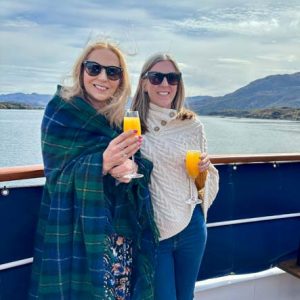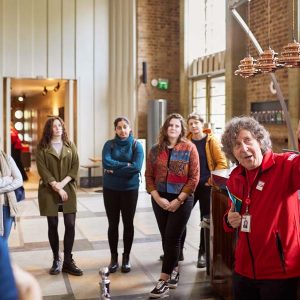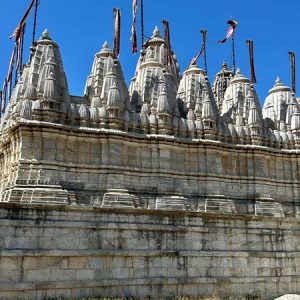Roger Bray considers art and history in this iconic city.
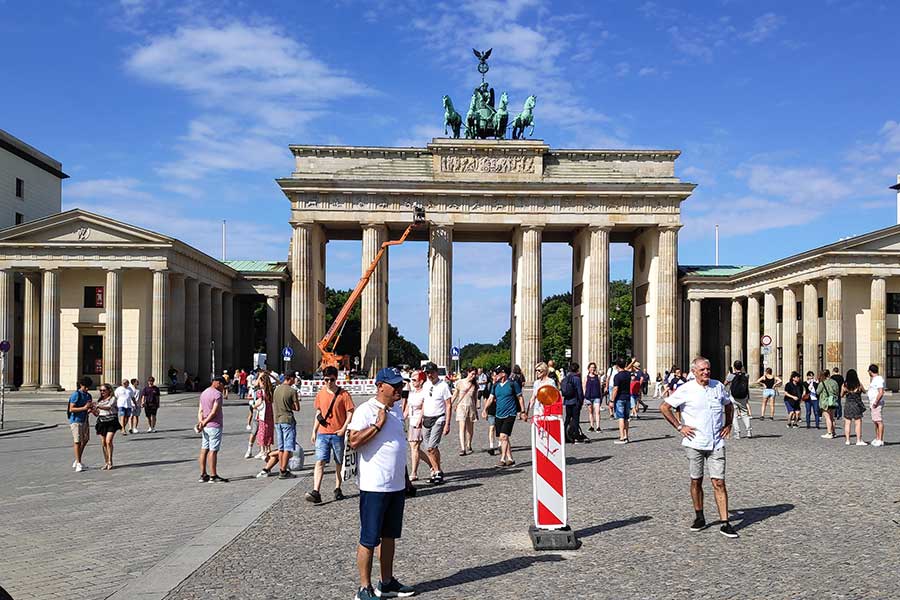

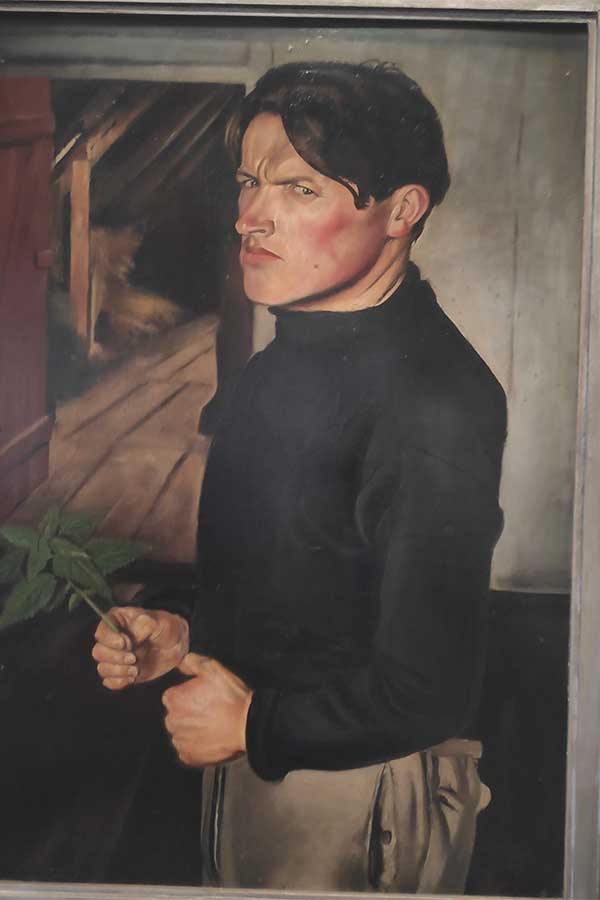
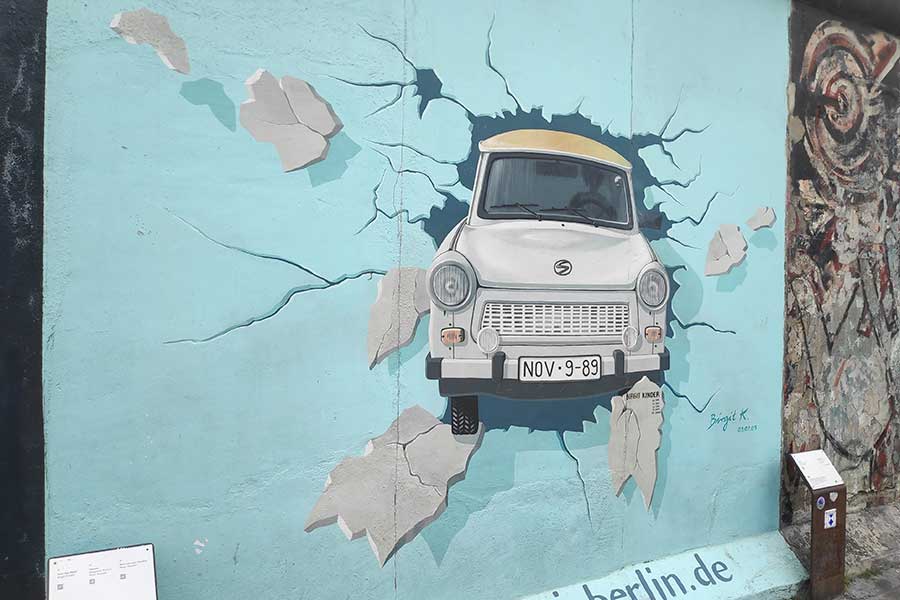
Berlin’s place at the epicentre of Europe’s twentieth century turbulence has been the focus of so much news and historical analysis during their lifetimes that older silver travellers may feel there is little to be gained there. That would be a mistake.
I had visited the German capital several times as a travel news reporter but, save for a sneaky morning in the Pergamon Museum* with its outstanding antiquity collection, never had time to explore it. My wife was a first timer.
We were determined to take in more than just reminders of war and its consequences but the Wall was unignorable, so on day one we headed for the East Side Gallery, at 1.3km the longest stretch to survive. After the wall’s demise, 118 artists from 21 countries poured out their emotional reactions on its concrete. Here are Birgit Kinder’s symbolic Trabant, bursting through it, and Dmitri Vrubel’s acid reflection on a famous kiss between Brezhnev and East German leader Eric Honecker, entitled: “My God, help me to survive this deadly love”. Most of the graffiti was lost when the masonry was restored in 2008-9 but almost all were repainted.
It merited slow reflection, so afternoon was already advanced when we crossed the street for refreshment on the forecourt of the Mercedes-Benz Arena. Coffee and cake are part of life for many Berliners, but beware. We plumped incautiously for iced coffee, which arrived with ice cream and Schlagsahne (whipped cream) and the gooiest, most delicious chocolate fudge cake imaginable. Our appetites for dinner were significantly blunted. Less calorific versions of iced coffee are available
A separate section of the Wall, though little is left standing, provides a bleaker impression of the way families, friend and neighbours were divided. On Bernau Strasse, whose two sides split, is a series of information panels and blown-up images, showing the site of an escape tunnel exit, for example, and a beaming woman being hauled from it. Further down the street is the visitor centre, with a platform where you get an overhead view of where you have been, and a small museum containing one of those spiked obstacles, known in the West as “Stalin’s lawns”, that were designed to prevent fugitives jumping into the border strip.
A broader look at Berlin’s story may be had at the recently renovated Neue National Galerie, with its stunning collection of 19th and 20th century art. Here are Curt Querner’s self portrait holding a stinging nettle, that symbolises opposition to the National Socialists, Christian Schad’s emancipated Weimar woman, “Sonja”, and George Grosz’s “Pillars of Society”, an onslaught against right wing extremists, lawyers, publishers and parliamentarians. Here too is Hitler’s “degenerate art”, by the likes of Ernst Kirchner and Otto Müller, and work by those forced into exile, such as Max Beckmann, who managed to flee to the United States. And the great Käthe Kollwitz, a version of whose gut wrenching pietà “Mother with Dead Son” can be seen in the Neue Wache, on Unter den Linden.
We attempted to visit the Käthe Kollwitz Museum but discovered it had been moved, and we could not find any information on the contents of its new incarnation.
Thinking to escape from fellow tourists we wandered in a leafy part of the Prenzlauer Berg district, where young mothers chatted over buggies, to lunch almost in the shadow of the 19th century tower that supplied Berliners with their first running water. Even here history lurked, for the building was used later as a Nazi prison and torture chamber. And while it was somehow heartwarming to share a “Tel Aviv meze” at a restaurant called Masel Topf, the feeling was diluted by the security patrol still needed at the Rykestrasse synagogue opposite, which had been badly damaged on Kristallnacht in 1936.
The same went for the red brick Neue Synagoge on Oranienburger Strasse, which was also attacked on that infamous night, though it was done more harm, towards the end of the war, by the RAF. This was an area that attracted many immigrants. In nearby August Strasse we spotted our first Stolpersteine (stumbling stones), the many small brass tablets recording the deportation and murder of residents. Close, too, were the Hackesche Höfe, a delightful series of linked courtyards, in secession (art deco) style, full of smart boutiques and eateries.
Germany may have its current economic headaches, too, though you might not think so at KaDeWe, the department store whose interwar progress from Jewish beginnings to Nazi “Aryanization” was told in a TV drama series. Conspicuous consumption is most vivid in the upper floor food hall, a cornucopia of savoury and sweet, overflowing with temptations from all manner of marzipans to cheeses, with the biggest selection of German wines you are likely to find anywhere.
On warm August evenings we strolled from our hotel to the Nikolai-Viertel, the old quarter restored after its wartime destruction, and with some success, by the East Germans. We ate Bratwurst and Schnitzel at shared tables in a packed beer garden on the Spree river. Eating out is very reasonably priced, with dinner with beer for two – enough for most appetites – widely available £60 for or less.
And there was just time to squeeze in a quick look at Berlin’s newest big cultural attraction, the Humboldt Forum Housed in a rebuilt palace, home to a huge array of ancient and modern non-European exhibits, such as Benin bronzes and canoes from Oceania – it has inevitably sparked controversy over looted art. It is boggling, but as with Berlin as a whole, we barely scratched the surface.
The Berlin Welcome Card is available in various forms and for different lengths of stay. It covers all public transport and free or discounted entry to many museums and other attractions. You can get it online but my advice would be to buy it at one of the city’s tourist information offices as the website doesn’t make clear in all cases what’s covered. One 5-day version doesn’t cover the Pergamon* and other major museums on the Museum Insel.
*Closed for renovation until 2027
Next steps
To arrange a Berlin city break, call our Silver Travel Advisors on 0800 412 5678.
Take a look at visitberlin.de/en for full details of attractions, exhibitions and events.

